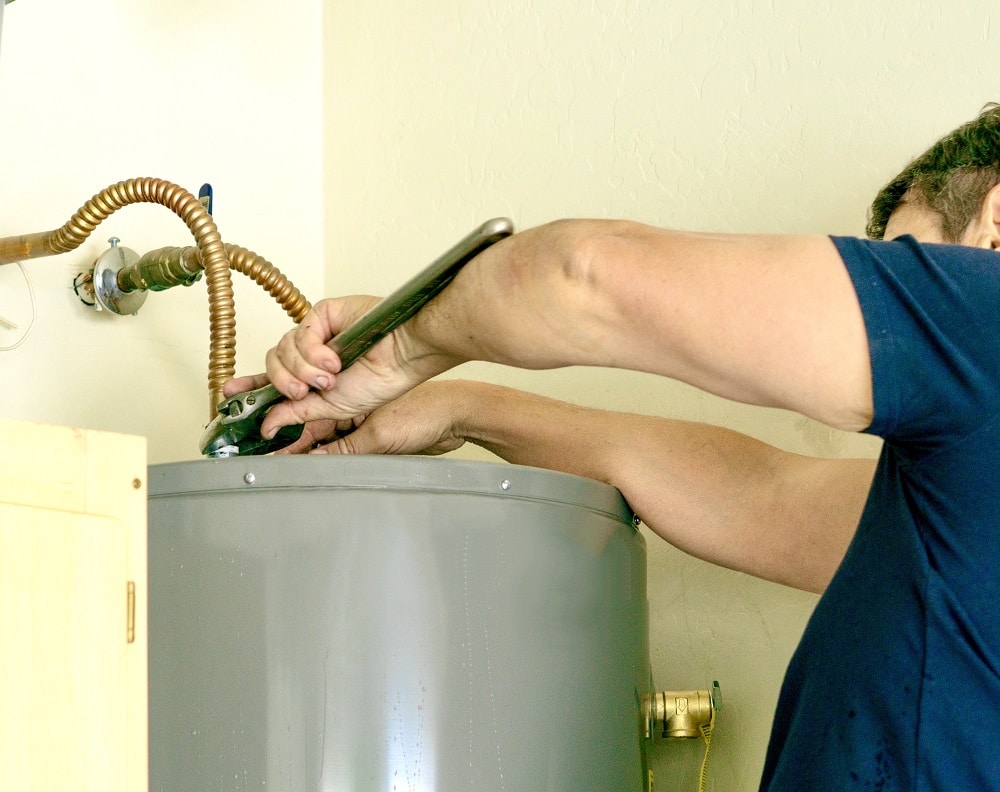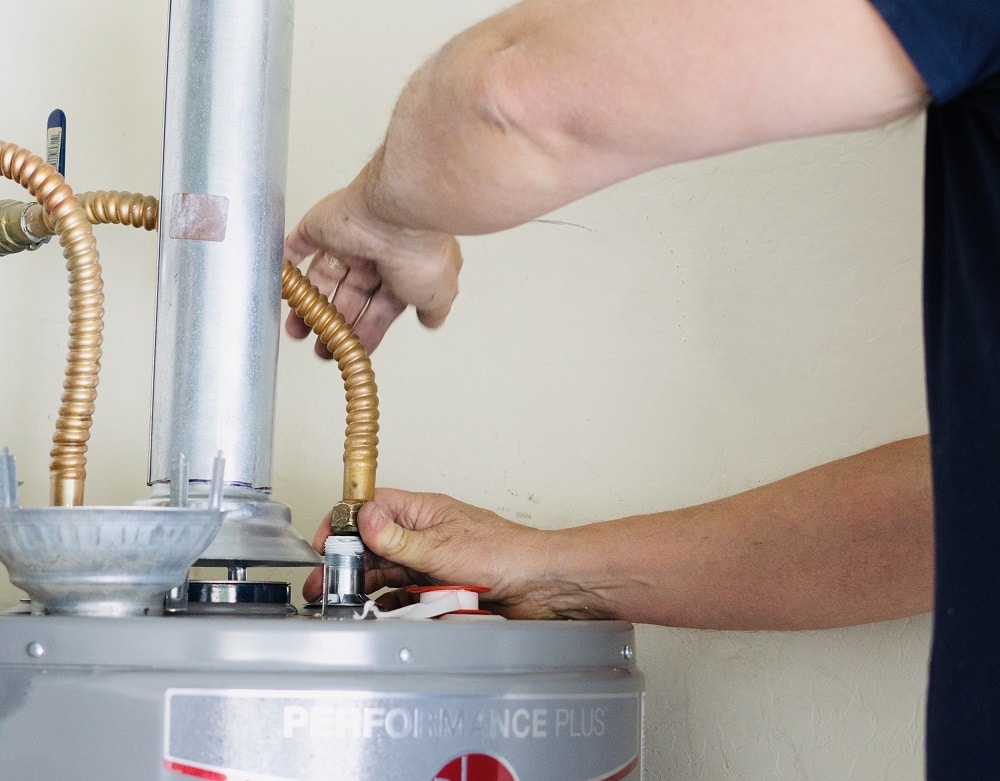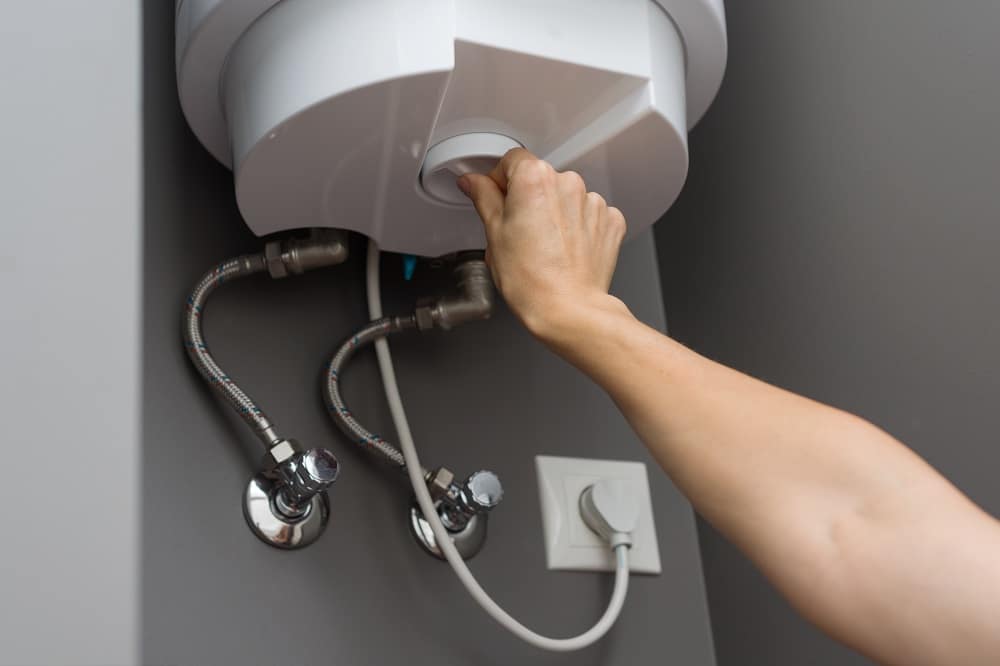Troubleshooting Common Water Heater Problems
-
tomsplumbing
-
0 Comment
Key Takeaways
- Sediment buildup, corrosion, and worn parts can reduce performance or cause failure if ignored.
- Warning signs include no hot water, strange noises, rust-colored water, or leaks.
- Check the power source, thermostat, pilot light, and heating elements before calling a professional.
- No hot water? It may be a tripped breaker, burned-out element, faulty thermostat, or pilot issue.
- Inconsistent water temperature often points to sediment, dip tube issues, small tank size, or low thermostat settings.
- Leaks around valves or from a corroded tank may need simple tightening or part replacement.
- Rusty or smelly water is often due to internal corrosion or bacteria reacting with the anode rod.
- Popping, squealing, or humming sounds usually indicate sediment buildup or loose parts.
- Flushing the tank and replacing the anode rod regularly helps extend system life.
When hot water suddenly disappears or your water heater starts making strange noises, something’s wrong. In areas like Los Angeles—where water heaters are in constant use—common problems can include sediment buildup, faulty thermostats, or worn-out parts. Addressing these issues early helps prevent bigger, more expensive repairs down the line.
At Tom’s Plumbing and Drain Service, LLC, we know how frustrating it is to lose hot water. This guide will help you figure out what might be going wrong, what you can check on your own, and when it’s time to bring in professional help.
Water heater acting up? Contact us today to schedule a professional repair or inspection.
Table of Contents
- Common Water Heater Problems and Why They Happen
- Warning Signs Your Water Heater Needs Attention
- What to Check When Things Go Wrong
- No Hot Water? Here’s What Might Be Happening
- Addressing Leaks Around the Water Heater
- Water Smells or Looks Bad? Here’s Why
- Understanding Water Heater Noises
- How to Keep Your Heater Running Longer
- Get Reliable Help from Tom’s Plumbing and Drain Service
Common Water Heater Problems and Why They Happen
Water heaters play a big role in your daily routine, providing hot water for showers, dishes, and laundry. Like any system, they wear down over time.
Common issues include:
Sediment buildup: Minerals from hard water settle at the bottom of the tank. This reduces heating efficiency and can lead to overheating.
- Corrosion: Rust or corrosion inside the tank or on parts like the anode rod weakens the system and shortens its lifespan.
- Leaking connections: Loose or damaged fittings can cause water leaks or pressure issues throughout the system.
- Worn-out components: Parts like thermostats, dip tubes, or heating elements may stop working properly over time and affect performance.
These problems often show up sooner if the unit hasn’t been flushed regularly or if your home has higher water usage.
Warning Signs Your Water Heater Needs Attention
You don’t need plumbing experience to know when something’s off.
Look for:
- No hot water coming from faucets
- Fluctuating water temperature
- Banging, popping, or other strange noises
- Water that smells bad or looks rusty
- Leaks or pooling water near the unit
If you’re seeing any of these, it’s best to start with a basic inspection.
What to Check When Things Go Wrong
Before jumping into repairs, it helps to go through a few simple checks.
- Power source: For electric models, check if the breaker has tripped. Reset if needed.
- Pilot light: If you have a gas unit, make sure the pilot light is on. If it’s not, follow the manual to relight it safely.
- Thermostat setting: The recommended setting is usually between 120°F and 140°F. If the water is too hot or cold, a small adjustment may help.
- Heating elements: Use a multimeter to test for continuity. A failed element needs to be replaced.
- Connections: Look for any signs of leaking, rust, or corrosion around the valves and fittings.
These checks can help you pinpoint the issue before calling in a technician.
No Hot Water? Here’s What Might Be Happening
When your system stops heating water entirely, these are the usual suspects:
1. Power or Pilot Light Failure

2. Faulty Thermostat
If adjusting the thermostat doesn’t work, the unit may not be regulating temperature correctly. Testing and replacing it can restore function.
3. Burned-Out Heating Element
Electric models use internal elements. If one fails, water won’t heat properly. These can be replaced once confirmed with a multimeter test.
4. Wiring Problems
Loose or damaged wires disrupt power flow. For anything beyond basic tightening, it’s safer to call in a licensed technician.
5. Burner Issues (Gas Models)
A dirty burner or clogged orifice can block gas flow, preventing heat. Cleaning or replacing the burner can usually fix this.
Addressing Leaks Around the Water Heater
Leaks are more than just messy—they can cause serious damage to floors, walls, and nearby areas.
Common Leak Locations:
- Around inlet and outlet valves
- At the pressure relief valve
- From cracks in the tank caused by corrosion
- From loose pipe fittings
Start by tightening any visible fittings. If that doesn’t stop the leak, the part may need replacing. Tank leaks from corrosion usually call for a full replacement.
Water Smells or Looks Bad? Here’s Why
If your water has a rusty tint or a rotten egg smell, the heater might be the source.
- Rust-colored water: Often indicates corrosion inside the tank or somewhere in your home’s plumbing system.
- Sulfur odors: Caused by bacteria reacting with the anode rod, often resulting in a rotten egg smell.
- Flushing the tank: Helps remove both bacteria and mineral sediment that affect water quality.
- Anode rod replacement: Prevents future corrosion and protects the tank by attracting minerals before they damage the lining.
If the issue only affects one faucet, it may be a plumbing line issue, not the heater itself.
Understanding Water Heater Noises
Strange sounds are usually caused by pressure or steam getting trapped.
- Popping or rumbling sounds: Usually caused by sediment buildup trapping steam bubbles at the bottom of the tank.
- Squealing noises: May occur when a valve is partially closed or if the water pressure is too high.
- Humming noise: Typically indicates a loose heating element vibrating during operation.
Start with a full flush. If the sound continues, call in a plumber to check for loose parts or deeper internal issues.
How to Keep Your Heater Running Longer
You can extend the life of your unit with regular maintenance.
Here’s what to focus on each year:
- Flush the tank to remove mineral deposits
- Replace the anode rod if it’s showing signs of wear
- Check and adjust thermostat settings if needed
- Inspect the pressure relief valve
- Schedule a professional inspection to catch problems early
These small tasks go a long way in helping the heater perform better and last longer.
Get Reliable Help from Tom’s Plumbing and Drain Service
When your water heater fails—or even just acts suspicious—it can mess up your day fast. That’s where we come in.
At Tom’s Plumbing and Drain Service, LLC, we’ve helped thousands homeowners get their hot water back with honest answers and fast service. Whether it’s a thermostat issue, a deep flush, or a full tank replacement, we’re ready to help.
Call us today for expert water heater repair, replacement, or maintenance. We’re here when you need us.



 Sediment buildup: Minerals from hard water settle at the bottom of the tank. This reduces heating efficiency and can lead to overheating.
Sediment buildup: Minerals from hard water settle at the bottom of the tank. This reduces heating efficiency and can lead to overheating.